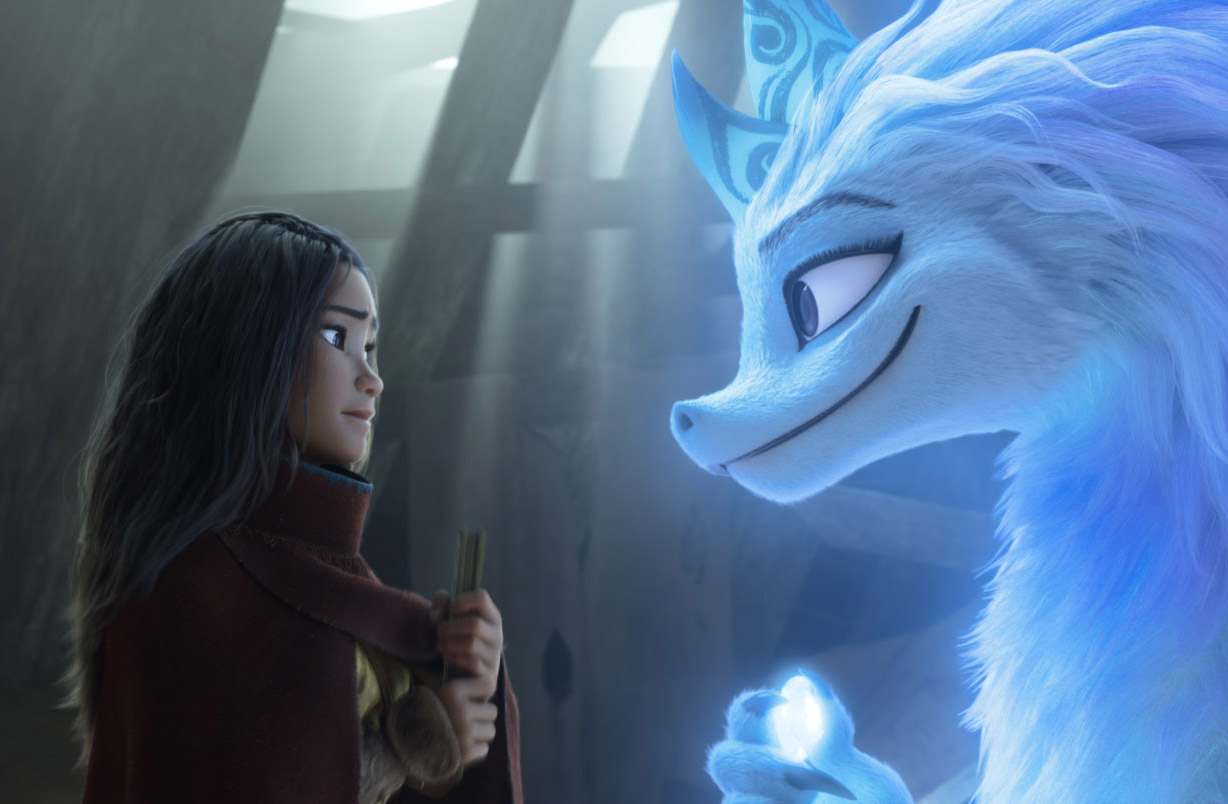Did you know Anna and Elsa aren’t technically considered “Disney Princesses”? The Frozen franchise is so bankable on its own that Disney Animation separated it from the overall Princess brand. The studio has no such confidence in Raya, the new Southeast Asian princess voiced by Kelly Marie Tran, but that’s probably for the better—if The Rise of Skywalker taught us anything, it’s that Disney would erase Tran from existence if it meant pleasing the broadest possible audience. And without Tran, Raya and the Last Dragon wouldn’t be half the film it is.
Her performance is best described as considerate: you can tell from the tenor of her line delivery that she cares about the material, that she’s taken the time to understand the context of each scene so she can pitch her character’s words with precision. When Raya dumps exposition about her homeland of Kumandra and the five clans fighting for its control, you can forgive the history lesson because of the exuberance in Tran’s voice, like she’s been waiting to tell this story forever. And with the character design ethos of “they pretty much look like real people” turning out better than ever—the animators really nail the minutiae of the face here—Raya is easily the most believably rounded protagonist that Disney Animation has crafted in the CGI era. She looks and sounds the part.
READ ALSO: ‘The Farewell’ will leave you wanting more
So you’ll be rooting for her when she ventures out to find the last dragon, the only being who can unite the clans of Kumandra against a common enemy. But Raya won’t need your support, because she already has the aid of the most reliable, time-tested system of all: the Disney formula. Rest assured, this princess is going to retrieve a shiny object and use its vague powers to defeat a generic evil, and she’s not going to do it without meeting some wacky sidekicks along the way. Too many of them, in fact. By its final act, Raya and the Last Dragon features no less than five wacky sidekicks. Even the titular last dragon, who joins the gang early in the film, is more Awkwafina-as-Mushu than creature of legend. Everyone’s cracking jokes; no one’s stopping to consider how jarring their American slang sounds against the backdrop of ancient Asian myth.
The sidekicks have use beyond pandering to the youth, though. They’re also a merry band of plot devices, causing incidental problems that extend the runtime or swooping in to reorient the screenplay when it’s been written into a corner. It’s a relief that Disney isn’t imposing romantic interests on all its princesses, but their screenplay formula hasn’t recovered from the lack of that built-in central relationship. Moana and Brave approached this problem in variously effective ways. Raya’s strategy is to ricochet its protagonist around a silly ensemble until she’s facing her destination. A romance would, honestly, be preferable—and the film even has a perfect window for one. It would complicate Raya’s most fleshed-out relationship and deepen the film’s themes of unity and trust. But Disney’s not ready for a gay princess yet.
Were they ready for a Southeast Asian one? That’s not for me to decide, but a studio isn’t a monolith, and neither are its attempts at representation. The loveliest cultural odes in Raya and the Last Dragon are those of the animation: the film is bursting with inspired interpretations of Southeast Asian food, style, and architecture, images that are beautiful because artists first found beauty elsewhere. But this imagery has again been plugged into a plot structure that avoids specificity like the plague, telling a story with broad, vaguely motivating ideas that would fit any cultural mythos like an oversized shirt. The rest is just mildly fun zaniness and merchandising opportunities.
★★★ (3/5)




